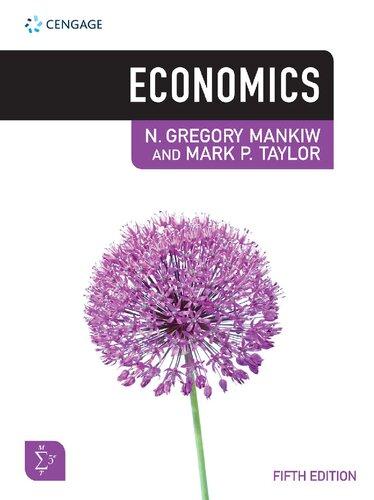The value and volume of trade between a country and its trading partners and the flows of
Question:
The value and volume of trade between a country and its trading partners and the flows of capital and assets are monitored and reported on by most countries. In the UK, the ONS publishes what is known as The Pink Book each year, which provides details of the ‘Balances between inward and outward transactions, providing a net flow of transactions between UK residents and the rest of the world and reports on how that flow is funded’.
A summary of the main points in The Pink Book, published in 2018, showed the UK current account deficit, a measure of the inflow and outflow of goods and services, investment incomes and transfer payments of the UK and the rest of the world, narrowed in 2017 to 3.9 per cent of nominal GDP compared to 5.2 per cent in 2016. The influence of the services sector in the UK economy has been growing for many years, and The Pink Book noted that the UK’s trade surplus in services has widened in the 20-year period between 1997 and 2017. In 2017, the trade surplus in services stood at £111.6 billion. The value of export services in 2017 was £277 billion while the value of import services was £165.5 billion. The biggest contributors to this surplus have been the growth in financial and travel services.
The trade in goods, however, is in deficit and has been so for many years. The ONS reported that the trade deficit had widened to £137.4 billion in 2017. This has reflected a trend of the trade deficit in goods becoming gradually wider since 1997. In 2017, the value of imported goods increased by £44.6 billion while the value of exported goods increased by a smaller £39.8 billion, resulting in the deficit in the balance of trade in goods widening by £4.8 billion.
In addition to reporting the position of the current account, The Pink Book also reports on the financial account which measures the ‘net acquisition or net incurrence of financial assets and liabilities’.
The financial account shows how the UK is financing its current account deficit. The ONS notes that there are three main types of investments which finance the UK current account deficit. Foreign direct investment (FDI) or direct investment, portfolio investment, and other. The Pink Book reported that investments into the UK from foreigners had increased in recent years at a faster rate than the investment by UK economic actors abroad. In 2016, the ONS noted that FDI in the UK represented the majority of all investments in the country, but in 2016, the majority of investments were ‘other’
investments, typically deposits and loans.
Critical Thinking Questions
1 Why do you think it is important for a country to record its trade flows with the rest of the world?
2 The UK trade deficit in goods has widened since 1997. What factors might have driven this trend?
3 The debate and uncertainty over Brexit has led to firms in financial services looking at their operations in the UK. Given the trends reported in The Pink Book, why do you think this is of concern to the UK economy?
4 The Pink Book describes the financial account as the ‘counterpart to the current and capital account’. Find out what the capital account is and explain why the financial account is described as the counterpart to the current and capital accounts.
5 What effect do you think the increase in FDI would have on the exchange rate of the UK pound with other currencies?
Step by Step Answer:






